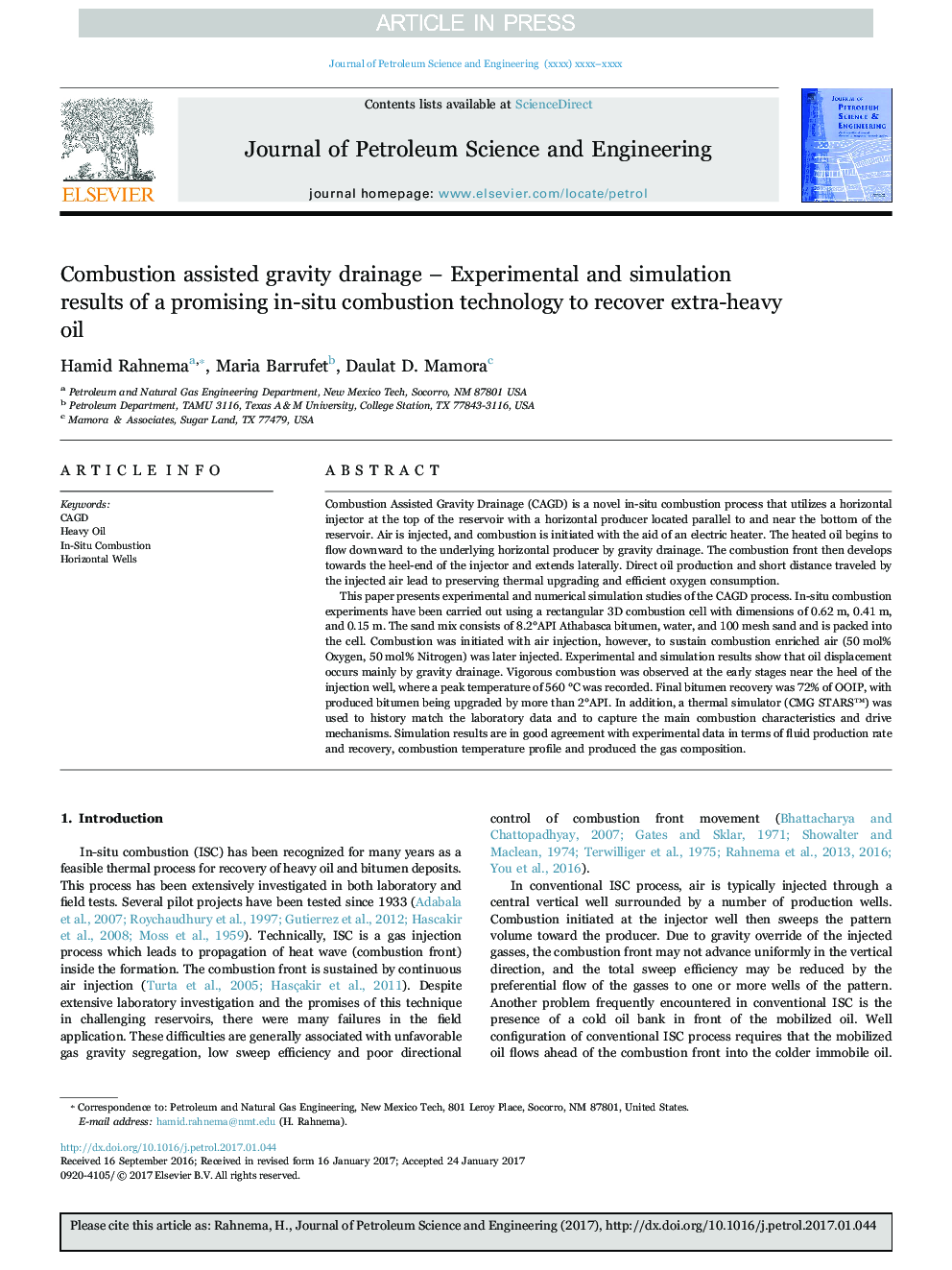| Article ID | Journal | Published Year | Pages | File Type |
|---|---|---|---|---|
| 5484235 | Journal of Petroleum Science and Engineering | 2017 | 8 Pages |
Abstract
This paper presents experimental and numerical simulation studies of the CAGD process. In-situ combustion experiments have been carried out using a rectangular 3D combustion cell with dimensions of 0.62 m, 0.41 m, and 0.15 m. The sand mix consists of 8.2°API Athabasca bitumen, water, and 100 mesh sand and is packed into the cell. Combustion was initiated with air injection, however, to sustain combustion enriched air (50 mol% Oxygen, 50 mol% Nitrogen) was later injected. Experimental and simulation results show that oil displacement occurs mainly by gravity drainage. Vigorous combustion was observed at the early stages near the heel of the injection well, where a peak temperature of 560 °C was recorded. Final bitumen recovery was 72% of OOIP, with produced bitumen being upgraded by more than 2°API. In addition, a thermal simulator (CMG STARSâ¢) was used to history match the laboratory data and to capture the main combustion characteristics and drive mechanisms. Simulation results are in good agreement with experimental data in terms of fluid production rate and recovery, combustion temperature profile and produced the gas composition.
Related Topics
Physical Sciences and Engineering
Earth and Planetary Sciences
Economic Geology
Authors
Hamid Rahnema, Maria Barrufet, Daulat D. Mamora,
